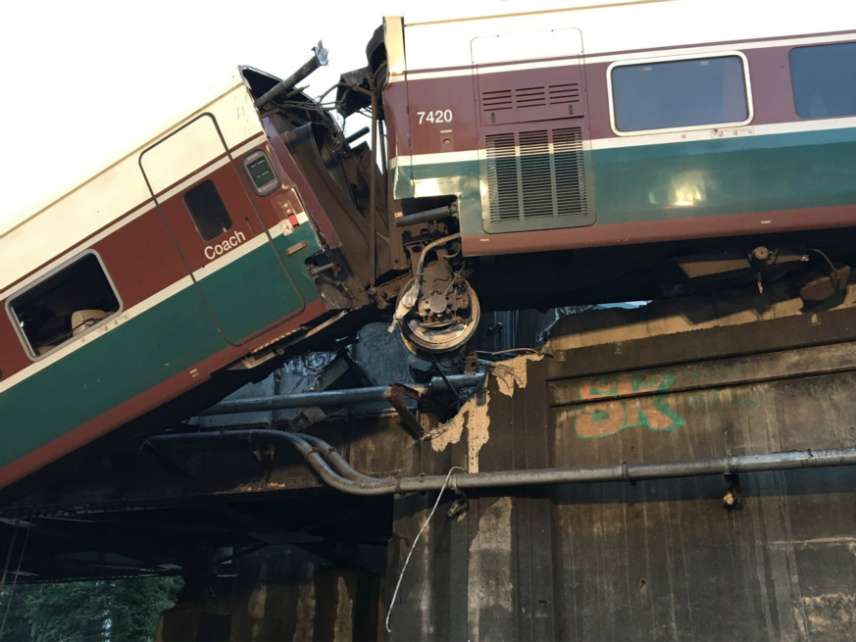Government, Media Push Costly New Safety System After Amtrak Derailment
Less flashy improvements would save more lives for far less money.

Safety regulations are often geared toward preventing the last tragic headline, not the next loss of life. We may be about to do that again in the aftermath of December's Amtrak accident in Washington state, where—thanks to overspeeding—a train derailed, killing three.
Politicians and pundits are now demanding that the railroads step up their implementation of Positive Train Control (PTC), an expensive autopilot-like system that is designed to automatically slow down speeding trains.
On Tuesday, the Department of Transportation released a letter sent by Transportation Secretary Elaine Chao to railroad executives, urging them to "greatly accelerate" their implementation of PTC. The Baltimore Sun echoed the idea in an unsigned editorial, claiming that "few safety enhancements are more overdue than Positive Train Control."
But while PTC may have prevented the last tragedy, it would do little to stop the vast majority of deaths caused by rail.
"What we're doing is we're letting the politicians decide where the railroads should spend their money based on what's visible in the news, rather than what really is the most cost-effective way of spending that money," says Randal O'Toole, a transportation policy expert at the Cato Institute.
The vast majority of rail fatalities result not from crashes that PTC might prevent but from people trespassing on tracks and from vehicles getting struck at the intersection of track and road. Of the 813 train deaths in 2016, only eight were the result of rail accidents, according to the Department of Transportation's statistics. That's compared to the 776 caused by trespassing or by vehicles on the tracks and another 29 "other incidents"—likely suicides.
"For a lot less money, we could do a lot more to stop trespassing, or improve grade crossings that would save a lot more lives," says O'Toole.
PTC does cost a lot of money. In 2008, Congress imposed a requirement that all railroads install PTC systems by 2015, a deadline later moved to 2018. The Federal Railroad Administration (FRA), the agency responsible for implementing the rule, has put the national cost of compliance as high as $23.7 billion—roughly equivalent to all railroad infrastructure spending in 2017. According to the Association of American Railroads, it's the largest regulatory cost the FRA has ever imposed on the industry.
The FRA has pretty blunt about the efficacy of PTC, stating in a 2009 economic analysis that the costs of implementing the system "would far exceed the benefits."
O'Toole agrees, pointing out that adding crossing arms to both sides of a grade crossing and fencing off more tracks to prevent trespassing would be far less expensive and far easier to implement. To the degree that each dollar spent on PTC is a dollar not spent on other safety improvements, this renewed drive to implement the system could actually be a detriment to safety.
"We're letting the politicians decide where the railroads should spend their money based on what's visible in the news, rather than what really is the most cost-effective way of spending that money," says O'Toole. "I don't think politicians should be the ones to decide that."
Rent Free is a weekly newsletter from Christian Britschgi on urbanism and the fight for less regulation, more housing, more property rights, and more freedom in America's cities.


Show Comments (21)